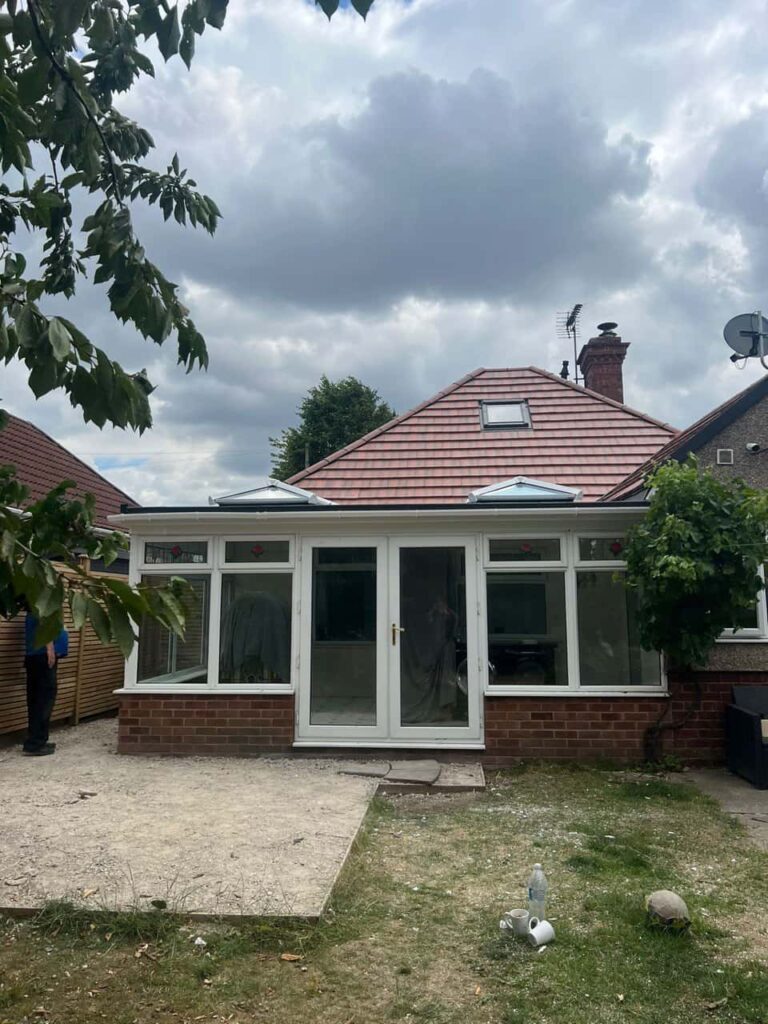The UK has experienced a noticeable increase in storm frequency and intensity over the past decade. These extreme weather events, driven by climate change, pose a significant challenge for homeowners across the country, particularly when it comes to roof resilience. At Atherstone Roofing Repairs, we understand the importance of ensuring your roof is equipped to withstand harsh weather conditions. This blog will explore how roofs in the UK are adapting to increasing storm frequency and why it’s essential to invest in robust roofing solutions.
The Impact of Storms on UK Roofs
Storms bring with them a combination of high winds, heavy rainfall, and occasionally hail, all of which can put significant strain on a roof. Even the most well-maintained roofs can suffer damage if not built or updated to meet the demands of extreme weather. Common issues caused by storms include:
- Wind Damage: Strong gusts can lift tiles or shingles, leaving the roof exposed to further damage and water infiltration.
- Water Leaks: Heavy rain can find its way through cracks or poorly maintained flashing, causing leaks and water damage within the home.
- Debris Damage: Falling branches or other debris carried by high winds can impact roofs, causing structural damage or punctures.
- Blocked Gutters: Rainstorms often lead to clogged gutters, which can result in water pooling on the roof and causing leaks.
With storms becoming more frequent, addressing these vulnerabilities is essential for any homeowner.
Roofing Materials Built for Resilience
As the frequency of storms increases, roofing materials that prioritise durability and resilience are becoming more popular across the UK. Homeowners looking to safeguard their properties should consider these materials for long-term protection.
- Slate Roofs: Slate is a traditional roofing material known for its exceptional durability. It is highly resistant to wind and water damage, making it an ideal choice for properties in storm-prone areas. In addition to its strength, slate also offers a natural, timeless aesthetic that can boost the value of your property.
- Metal Roofs: Metal roofing is growing in popularity for its resilience to both wind and water. Modern metal roofs are engineered to resist corrosion, providing a long-lasting solution even in areas with heavy rainfall or high humidity. Metal roofs can also withstand winds of up to 140 mph, making them a reliable option for areas frequently hit by storms.
- Concrete Tiles: Concrete roofing tiles are heavier than traditional materials, giving them greater stability in high winds. Their robust nature makes them less prone to breakage, and they are highly water-resistant, making them a good choice for withstanding both wind and rain damage.
- EPDM Rubber Roofing: For flat roofs, EPDM rubber roofing is one of the best options available. It is resistant to UV rays, ozone, and extreme weather conditions. Its seamless application reduces the risk of leaks, making it a popular choice for commercial and residential buildings alike.
Enhancing Roof Resilience with Modern Techniques
In addition to upgrading roofing materials, homeowners can also benefit from modern techniques designed to increase roof resilience during storms.
- Improved Roof Flashing: Flashing is the material that seals joints between different parts of the roof, such as around chimneys or skylights. Properly installed and maintained flashing is essential for preventing water penetration during storms. High-quality flashing materials such as lead or zinc can offer better protection than cheaper alternatives.
- Storm Straps and Brackets: For areas prone to high winds, storm straps or brackets can be used to secure the roof more firmly to the building’s structure. These metal components add extra strength, reducing the risk of the roof being lifted by strong winds.
- Roof Ventilation: Effective roof ventilation helps to regulate temperature and moisture levels within the roof space, preventing condensation build-up that can weaken the structure over time. Well-ventilated roofs are better equipped to handle the moisture that accompanies stormy weather.
- Regular Maintenance and Inspections: One of the simplest yet most effective ways to increase roof resilience is through regular maintenance and inspections. A professional inspection can identify potential weaknesses, such as loose tiles or deteriorating flashing, before they become problematic during a storm.
Why Invest in a Resilient Roof?
Investing in a resilient roof is more than just protecting your home during a storm—it’s about safeguarding your property’s value and ensuring peace of mind. A roof designed to withstand storms will:
- Prevent costly repairs: Addressing vulnerabilities before a storm can save you from expensive damage, such as water leaks or structural repairs.
- Enhance property value: A well-maintained, storm-resistant roof adds value to your property, making it more attractive to potential buyers.
- Provide long-term protection: Roofing materials and techniques designed for storm resilience offer longer-lasting solutions, reducing the need for frequent repairs or replacements.
Conclusion
With storm frequency on the rise, it’s more important than ever to ensure your roof is built to withstand the challenges posed by extreme weather. At Atherstone Roofing Repairs, we offer expert roofing services tailored to the unique demands of UK weather, ensuring your home is protected and resilient in the face of storms. Whether you’re looking to upgrade your roofing materials or need an inspection to assess your roof’s condition, we’re here to help.
Call us on: 01827 949 598
Click here to find out more about Atherstone Roofing Repairs
Click here to complete our contact form and see how we can help with your roofing needs.

